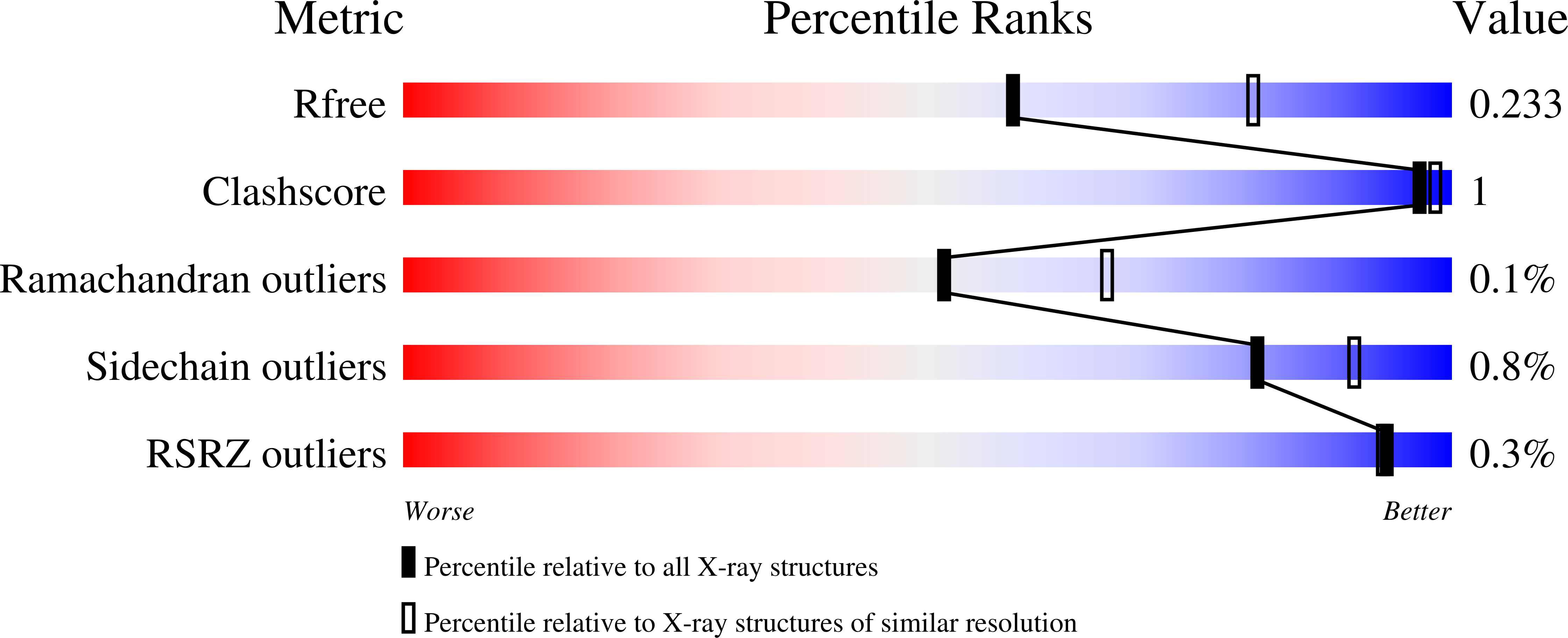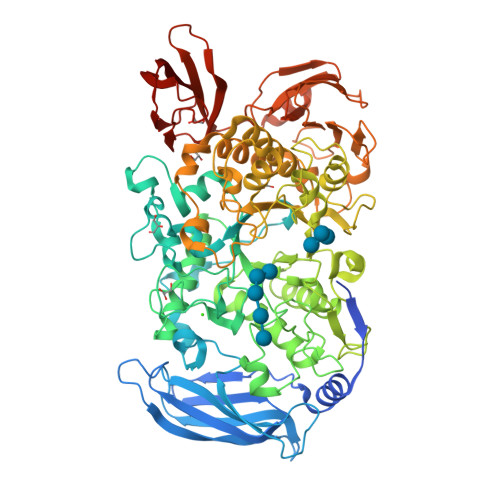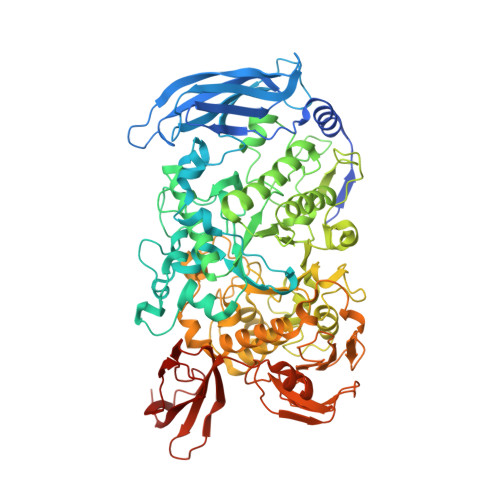Structure and substrate recognition by the Ruminococcus bromii amylosome pullulanases.
Cockburn, D.W., Kibler, R., Brown, H.A., Duvall, R., Morais, S., Bayer, E., Koropatkin, N.M.(2021) J Struct Biol 213: 107765-107765
- PubMed: 34186214
- DOI: https://doi.org/10.1016/j.jsb.2021.107765
- Primary Citation of Related Structures:
7LSA, 7LSR, 7LST, 7LSU - PubMed Abstract:
Pullulanases are glycoside hydrolase family 13 (GH13) enzymes that target α1,6 glucosidic linkages within starch and aid in the degradation of the α1,4- and α1,6- linked glucans pullulan, glycogen and amylopectin. The human gut bacterium Ruminococcus bromii synthesizes two extracellular pullulanases, Amy10 and Amy12, that are incorporated into the multiprotein amylosome complex that enables the digestion of granular resistant starch from the diet. Here we provide a comparative biochemical analysis of these pullulanases and the x-ray crystal structures of the wild type and the nucleophile mutant D392A of Amy12 complexed with maltoheptaose and 6 3 -α-D glucosyl-maltotriose. While Amy10 displays higher catalytic efficiency on pullulan and cleaves only α1,6 linkages, Amy12 has some activity on α1,4 linkages suggesting that these enzymes are not redundant within the amylosome. Our structures of Amy12 include a mucin-binding protein (MucBP) domain that follows the C-domain of the GH13 fold, an atypical feature of these enzymes. The wild type Amy12 structure with maltoheptaose captured two oligosaccharides in the active site arranged as expected following catalysis of an α1,6 branch point in amylopectin. The nucleophile mutant D392A complexed with maltoheptaose or 6 3 -α-D glucosyl-maltotriose captured β-glucose at the reducing end in the -1 subsite, facilitated by the truncation of the active site aspartate and stabilized by stacking with Y279. The core interface between the co-crystallized ligands and Amy12 occurs within the -2 through + 1 subsites, which may allow for flexible recognition of α1,6 linkages within a variety of starch structures.
Organizational Affiliation:
Department of Microbiology and Immunology, University of Michigan Medical School, Ann Arbor, MI 48109, United States.





















